8 start with O start with O
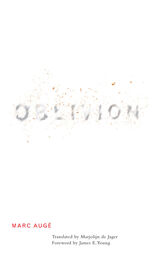
“Remembering or forgetting is doing gardener’s work, selecting, pruning. Memories are like plants: there are those that need to be quickly eliminated in order to help the others burgeon, transform, flower.”
For the health of the psyche and the culture, for the individual and the whole society, oblivion is as necessary as memory. One must know how to forget, Marc Augé suggests, not just to live fully in the present but also to comprehend the past.
Renowned as an anthropologist and an innovative social thinker, Augé’s meditation moves from how forgetting the present or recent past enables us to return to earlier pasts, to how forgetting propels us into the present, and finally to how forgetting becomes a necessary part of survival. Oblivion moves with authority and ease among a wide variety of sources—literature, common experience, psychoanalysis, philosophy, ethnography—to illustrate the interplay of memory and forgetting in the stories of life and death told across many cultures and many times. Memory and oblivion, he concludes, cannot be separated: “Memories are crafted by oblivion as the outlines of the shore are created by the sea.”

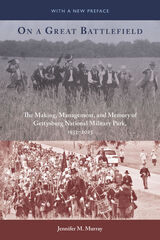
Service manages, none hold more national appeal and recognition than Gettysburg National
Military Park. Welcoming more than one million visitors annually from across the
nation and around the world, the National Park Service at Gettysburg holds the enormous
responsibility of preserving the war’s “hallowed ground” and educating the public, not
only on the battle, but also about the Civil War as the nation’s defining moment. Although
historians and enthusiasts continually add to the shelves of Gettysburg scholarship, they
have paid only minimal attention to the battlefield itself and the process of preserving,
interpreting, and remembering the bloodiest battle of the Civil War. In On a Great Battlefield,
Jennifer M. Murray provides a critical perspective to Gettysburg historiography by
offering an in-depth exploration of the national military park and how the Gettysburg
battlefield has evolved since the National Park Service acquired the site in August 1933.
As Murray reveals, the history of the Gettysburg battlefield underscores the complexity
of preserving and interpreting a historic landscape. After a short overview of early
efforts to preserve the battlefield by the Gettysburg Battlefield Memorial Association
(1864–1895) and the United States War Department (1895–1933), Murray chronicles the
administration of the National Park Service and the multitude of external factors—including
the Great Depression, the New Deal, World War II, the Civil War Centennial, and
recent sesquicentennial celebrations—that influenced operations and molded Americans’
understanding of the battle and its history. Haphazard landscape practices, promotion of
tourism, encouragement of recreational pursuits, ill-defined policies of preserving cultural
resources, and the inevitable turnover of administrators guided by very different
preservation values regularly influenced the direction of the park and the presentation
of the Civil War’s popular memory. By highlighting the complicated nexus between preservation,
tourism, popular culture, interpretation, and memory, On a Great Battlefield
provides a unique perspective on the Mecca of Civil War landscapes.
Jennifer M. Murray, assistant professor of history at the University of Virginia’s College
at Wise, is the author of The Civil War Begins. Her articles have appeared in Civil War
History, Civil War Times, and Civil War Times Illustrated.
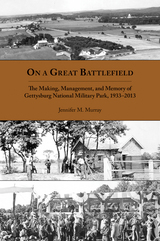
Service manages, none hold more national appeal and recognition than Gettysburg National
Military Park. Welcoming more than one million visitors annually from across the
nation and around the world, the National Park Service at Gettysburg holds the enormous
responsibility of preserving the war’s “hallowed ground” and educating the public, not
only on the battle, but also about the Civil War as the nation’s defining moment. Although
historians and enthusiasts continually add to the shelves of Gettysburg scholarship, they
have paid only minimal attention to the battlefield itself and the process of preserving,
interpreting, and remembering the bloodiest battle of the Civil War. In On a Great Battlefield,
Jennifer M. Murray provides a critical perspective to Gettysburg historiography by
offering an in-depth exploration of the national military park and how the Gettysburg
battlefield has evolved since the National Park Service acquired the site in August 1933.
As Murray reveals, the history of the Gettysburg battlefield underscores the complexity
of preserving and interpreting a historic landscape. After a short overview of early
efforts to preserve the battlefield by the Gettysburg Battlefield Memorial Association
(1864–1895) and the United States War Department (1895–1933), Murray chronicles the
administration of the National Park Service and the multitude of external factors—including
the Great Depression, the New Deal, World War II, the Civil War Centennial, and
recent sesquicentennial celebrations—that influenced operations and molded Americans’
understanding of the battle and its history. Haphazard landscape practices, promotion of
tourism, encouragement of recreational pursuits, ill-defined policies of preserving cultural
resources, and the inevitable turnover of administrators guided by very different
preservation values regularly influenced the direction of the park and the presentation
of the Civil War’s popular memory. By highlighting the complicated nexus between preservation,
tourism, popular culture, interpretation, and memory, On a Great Battlefield
provides a unique perspective on the Mecca of Civil War landscapes.
Jennifer M. Murray, assistant professor of history at the University of Virginia’s College
at Wise, is the author of The Civil War Begins. Her articles have appeared in Civil War
History, Civil War Times, and Civil War Times Illustrated.
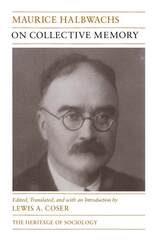
How do we use our mental images of the present to reconstruct our past? Maurice Halbwachs (1877-1945) addressed this question for the first time in his work on collective memory, which established him as a major figure in the history of sociology. This volume, the first comprehensive English-language translation of Halbwach's writings on the social construction of memory, fills a major gap in the literature on the sociology of knowledge.
Halbwachs' primary thesis is that human memory can only function within a collective context. Collective memory, Halbwachs asserts, is always selective; various groups of people have different collective memories, which in turn give rise to different modes of behavior. Halbwachs shows, for example, how pilgrims to the Holy Land over the centuries evoked very different images of the events of Jesus' life; how wealthy old families in France have a memory of the past that diverges sharply from that of the nouveaux riches; and how working class construction of reality differ from those of their middle-class counterparts.
With a detailed introduction by Lewis A. Coser, this translation will be an indispensable source for new research in historical sociology and cultural memory.
Lewis A. Coser is Distinguished Professor of Sociology Emeritus at the State University of New York and Adjunct Professor of Sociology at Boston College.
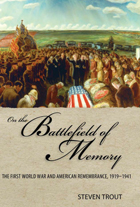
This work is a detailed study of how Americans in the 1920s and 1930s interpreted and remembered the First World War. Steven Trout asserts that from the beginning American memory of the war was fractured and unsettled, more a matter of competing sets of collective memories—each set with its own spokespeople— than a unified body of myth. The members of the American Legion remembered the war as a time of assimilation and national harmony. However, African Americans and radicalized whites recalled a very different war. And so did many of the nation’s writers, filmmakers, and painters.
Trout studies a wide range of cultural products for their implications concerning the legacy of the war: John Dos Passos’s novels Three Soldiers and 1919, Willa Cather’s One of Ours, William March’s Company K, and Laurence Stallings’s Plumes; paintings by Harvey Dunn, Horace Pippin, and John Steuart Curry; portrayals of the war in The American Legion Weekly and The American Legion Monthly; war memorials and public monuments like the Tomb of the Unknown Soldier; and commemorative products such as the twelve-inch tall Spirit of the American Doughboy statue.
Trout argues that American memory of World War I was not only confused and contradictory during the ‘20s and ‘30s, but confused and contradictory in ways that accommodated affirmative interpretations of modern warfare and military service. Somewhat in the face of conventional wisdom, Trout shows that World War I did not destroy the glamour of war for all, or even most, Americans and enhanced it for many.
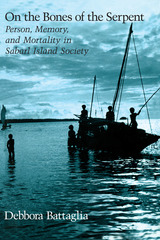
The creative focus of Sabarl cultural life is a series of mortuary feasts and rituals known as segaiya. In assembling and disassembling commemorative food and objects in segaiya exchanges, Sabarl also assemble and disassemble the critical social relations such objects stand for. These commemorative acts create a collective memory yet also a collective experience of forgetting social bonds that are of no future use to the living. Sabarl anticipate this disaggregation in patterns of everyday life, which reveal the importance of categorical distinctions mapped in beliefs about the physical and metaphysical person.
Using remembrance and forgetting as an analytic lens, Battaglia is able to ask questions critical to understanding Melanesian social process. One of the "new ethnographies" addressing the limits of ethnographic representation and the fragmented nature of knowledge from an indigenous perspective, her finely wrought study explores the dynamics of cultural practices in which decontruction is integral to construction, allowing a new perspective on the ephermeral nature of sociality in Melanesia and new insight into the efficacy of cultural images more generally.
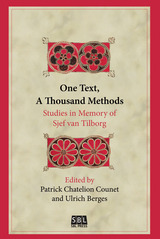
A Brill classic now in paperback from SBL Press
Essays in this volume describe the shift in biblical exegesis within the last several decades from the interpretation of biblical texts as the outcome of historical development, or diachronic methodology, to the exploration of the text as the result of a reading process rather than a historical process, or synchronic methodology. The methods discussed include ideology criticism, semantic and poetic analysis, cognitive linguistics, drama theory, narratology, deconstruction, and anthropology, and intertextuality. The authors of this work challenge biblical scholars not to just perform exegesis, but to explore the methods and aims underlying their interpretations.
Features:
- Essays examine texts from the Old or New Testament through the lens of one of the many modern synchronic methods used in postmodern literary interpretation
- Fifteen essays from top scholars in the field
READERS
Browse our collection.
PUBLISHERS
See BiblioVault's publisher services.
STUDENT SERVICES
Files for college accessibility offices.
UChicago Accessibility Resources
home | accessibility | search | about | contact us
BiblioVault ® 2001 - 2024
The University of Chicago Press









